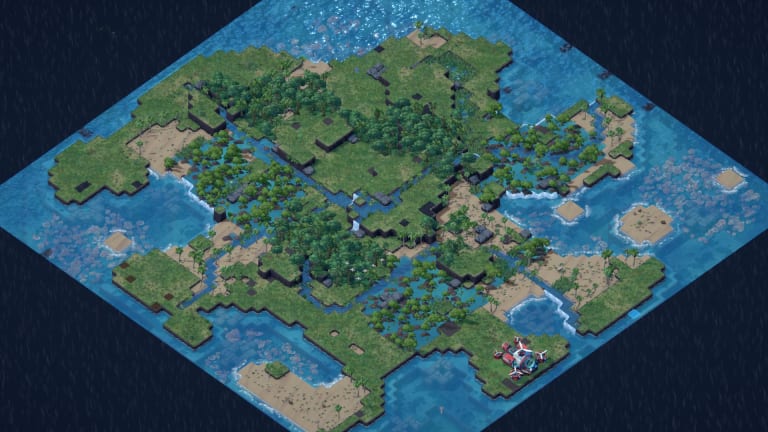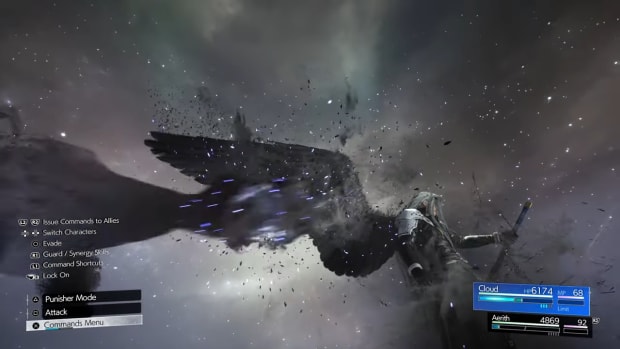
Terra Nil review: a strategy game about planting happy little trees

Most strategy games are about harvesting resources and using them to destroy your opponent, no matter the cost. Hell, the popular sub-genre 4X’s name literally means “explore, expand, exploit, exterminate” and thus aptly describes what we as players do in these games. Yes, we build up mighty, and perhaps even utopian, civilizations, but seldom do strategy games ask about the cost of this endeavor. Humankind has been playing a 4X game on Earth since our primitive little monkey brains made the evolutionary jump to be a little less primitive, and we’ve started to ask that question only recently.
Terra Nil, which was developed by Free Lives and published by Devolver Digital, is not just asking about the cost, it’s showing it to us and asking us to clean up the messy aftermath.
The game is presenting us with barren wastelands full of toxic sludge, on a dead planet where not a single living being can be seen. There are no details about what exactly happened here, and to be honest it doesn’t really matter. This could be a former mining planet in any of my Stellaris games, now stripped of its resources and forgotten, a nuclear wasteland left behind after a devastating war in Civilization or Hearts of Iron, or a bleak look into our own planet’s future.
Instead of chopping down trees, building up an economy, and waging war, we have the simple task of making this wasteland green again, providing suitable conditions for plants and animals to thrive here once more.
The general gameplay loop is always the same: First, we need to detoxify as much of the ground as possible and make it green. Then we have to create different habitats and resettle them with animals, and finally evacuate all our structures and fly away without a trace, leaving behind a perfectly natural and thriving biome.

Cleaning up the planet requires some buildings, but we'll need to recycle all of that afterwards.
Free Lives
The game sends us to four distinct environments that represent ever higher difficulties, which each present their own sets of challenges and tools. We construct windmills and geothermal power plants to generate power for machines that detoxify the ground, sprinklers that water it, and cloud seeders that manipulate the humidity to let rain fall on the surface once again.
Sometimes, though, you need to destroy to grow something. We need to burn down fields we just turned green to prepare the perfect conditions for a forest to grow and to heat up the atmosphere. Sometimes we need to dig moats to expand a river system, or bomb the surface with explosives to unleash streams of energy-providing magma.
Despite the adorable visuals and the incredibly relaxing soundtrack, Terra Nil is a challenging strategy game, because even though it provides a different kind of perspective for this genre, it adheres to its core principles. Our resources are always limited and we steadily need to expand our regreening efforts to collect more. Different animals require specific conditions and combos of habitats you’ll need to pre-plan for, and you’ll need to keep your evacuation plans in mind right from the start too, making it necessary to carefully explore the map and think about your strategy before executing it.

The Tropical Islands require you to build monorail tracks for transport and evacuation purposes.
Free Lives
You don’t want to burn down too many fields or forests to raise the temperature, or spread out too much and then discover that you can’t reach some of those buildings in the far corners when it’s time to pack things up again. Systems and tools are slowly introduced and stacked on top of each other as you advance through the environments, making it necessary to prioritize between different steps and giving you something to sink your teeth into.
There is no real-time aspect to Terra Nil, which contributes to keeping it relaxed despite its challenging, puzzle-like nature. However, you can only ever undo your last move, so making mistakes that go unnoticed might punish you later on.
It’s a strange feeling to appreciate the beauty of the environment you’ve created at the end of a mission, because a seemingly untouched map normally is where we start a strategy game, not end it. Terra Nil asks us to do the opposite of what we usually do in this genre, the most difficult thing it could ask of us: letting go.

Your mission is complete once the environment is thriving and your structures are recycled.
Free Lives
And you know what? Letting go feels good. Despite not building something monumental and epic, you get a lot of satisfaction from Terra Nil. As you enter the world, it looks and feels totally desolate, with the only sound being the wind blowing over the empty brown wastelands. But then you get different sounds: You start hearing leaves rustling in the wind, the buzzing of bees, the chirping of birds, the splashing of fish. As the world gets more colorful, it also gets louder.
That’s as captivating and gripping as duking it out in a war, or racing to expand in resource-rich areas before the enemy.
I had a mild panic attack on my first ever mission in Terra Nil when I thought that I had forgotten the little drone boat that was responsible for packing in all my buildings. Thinking I had ruined all I’ve worked so hard for, I was thankful to see the airship take it on board before flying off into the sunset.
Terra Nil is the Bob Ross strategy game about planting happy little trees you never knew you needed in your life. It will be out on March 28, 2023, on PC via Steam and GOG and will also be included in your Netflix subscription via Netflix Games.
Score: 8/10
Tested on PC.




